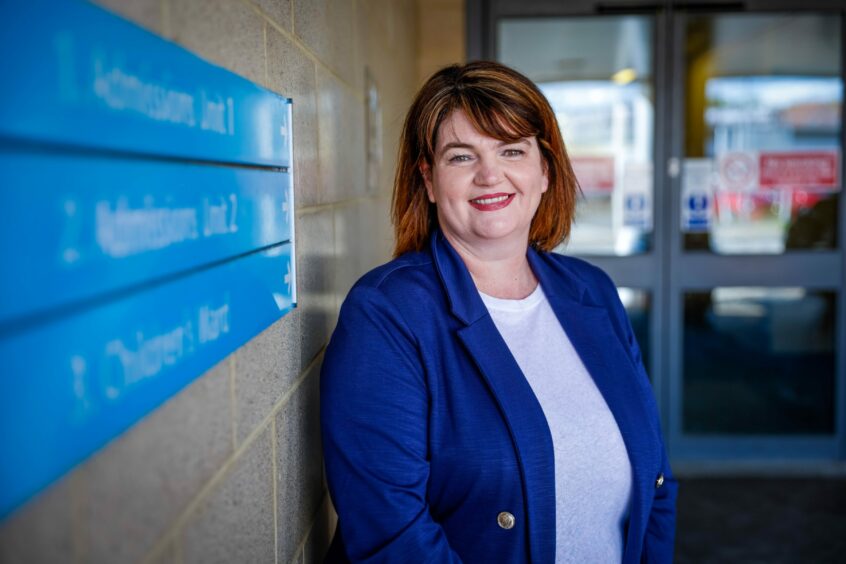Waiting times at A&E departments across the country have been a hot topic for months.
But what is the story behind those figures?
We visited Victoria Hospital in Kirkcaldy’s A&E department to find out.
And asked director of acute services Claire Dobson and emergency consultant Dr Melvin Carew if difficulties getting a GP appointment increase pressure on A&E.
Emergency departments deal with a range of injuries and severity of illnesses.
They operate almost like their own hospital within a hospital – people arrive (by their own volition or often by ambulance), are triaged, prioritised according to need and treated.
And the team caring for them includes reception staff, to nurses, nurse practitioners, doctors, consultants and paramedics.
What is the four-hour standard?
Public Health Scotland publish waiting times for accident and emergency departments across the country on a weekly basis.
The Scottish Government has a standard that 95% of patients should be seen within four hours.
NHS Fife were regularly between 90 to 97% before Covid, with performance tending to dip over winter when demand was at its peak.
But it has failed to reach target since September 2020, which has led to criticism.
Nationally, the target hasn’t been hit since July 2020.
Why is the target being missed?
There are a number of different factors, but three main issues staff and NHS bosses are dealing with:
1. Higher attendance numbers
Claire Dobson says: “We used to be able to predict when it would be busy, for example after a bank holiday.
“But now it’s just busy all the time.”
Claire cites the example of Easter time – when attendance numbers were higher than the peak of winter.
Between May and August last year, the Emergency Department recorded five of its six highest daily attendances since records began.
Dr Carew explains: “We can get surges of people coming in – 20 one hour, 15 the next, then 20 the next!
“This is one of the challenges and it can be quite difficult for the team.”
2. Blocks and pressures in the system
The knock-on effect of delays elsewhere in the healthcare system can also affect the flow – especially out – of A&E too, Claire adds.
And because the emergency department doesn’t operate in isolation, sometimes patients have to wait for assessments, transfers and care packages.
“There’s a relationship with what’s happening in other parts of the hospital and across the partnership,” she explains.
“If the flow through elsewhere is delayed – for example, if we are waiting for someone getting home so we can admit a patient into that ward – it disrupts the flow.”
Dr Carew explains pressures elsewhere have an impact, but so does severity of cases being dealt with on any particular shift, which can’t be predicted.
“If for example someone is in resus (where they need to be resuscitated) they may need the attention of two or three doctors – that has a knock-on and other people have to sit and wait longer than we would like.”
3. Change to types of patients going to A&E
They’ve also noticed a change in the nature of the issues of patients coming into the emergency department.
It is thought to be the knock-on effect of the pandemic.
Dr Carew explains: “The challenge is that we are seeing very sick people. Patients are far sicker and many are a lot frailer.
“So someone who, in the past, could have been home sooner maybe will be in hospital for a longer time.”
And when we reach the observations area, where patients stay until they are discharged often waiting for transport or assessment, Dr Carew explains the complex issues they deal with.
Overdose
“We’re seeing a lot more people experiencing mental health issues and things with greater consequences for them.
“During Covid, we noticed there was a massive reduction in those patients.
“But what we are seeing now is more severe. If someone has taken an overdose, for example, they need proper assessments and need a lot more observation.”
What’s being done to help?
Changes were made last year to urgent care provision in Scotland with the launch of the Right Care, Right Place initiative.
It is designed to help people get care whilst reducing the pressure on busy frontline NHS services.
Those with life-threatening conditions should continue to go to A&E or call 999.
Claire adds: “Anyone whose condition is not life-threatening should instead call NHS 24 on 111, day or night.
“Making this call helps ensure people are directed to the most appropriate service for them, whilst allowing clinical staff to devote more time to caring for those who need it most.”

















Conversation